Soba Noodle Salad
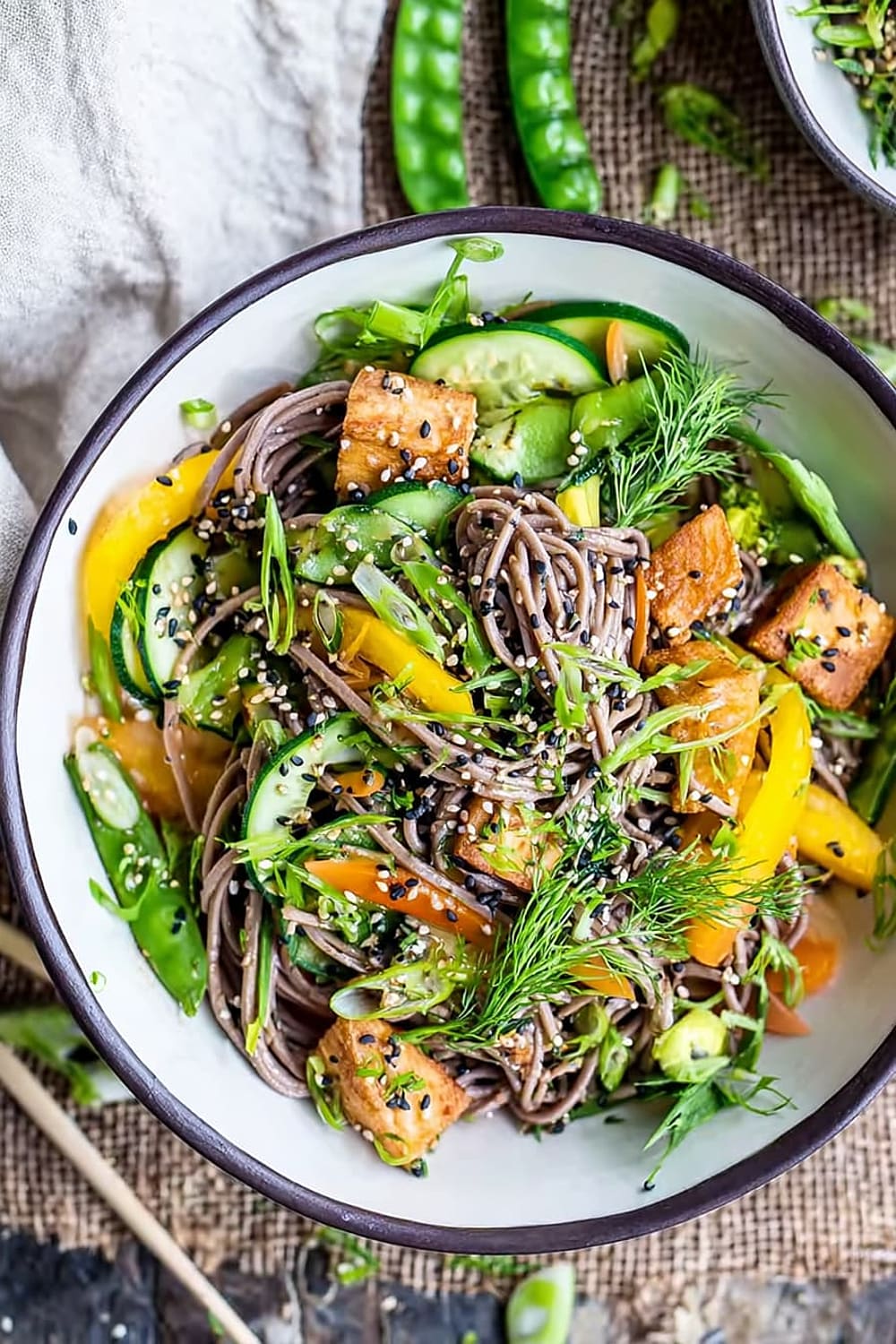
This soba noodle salad is basically the overachiever of the salad world – it looks fancy, tastes incredible, and somehow manages to be both refreshing and satisfying at the same time.
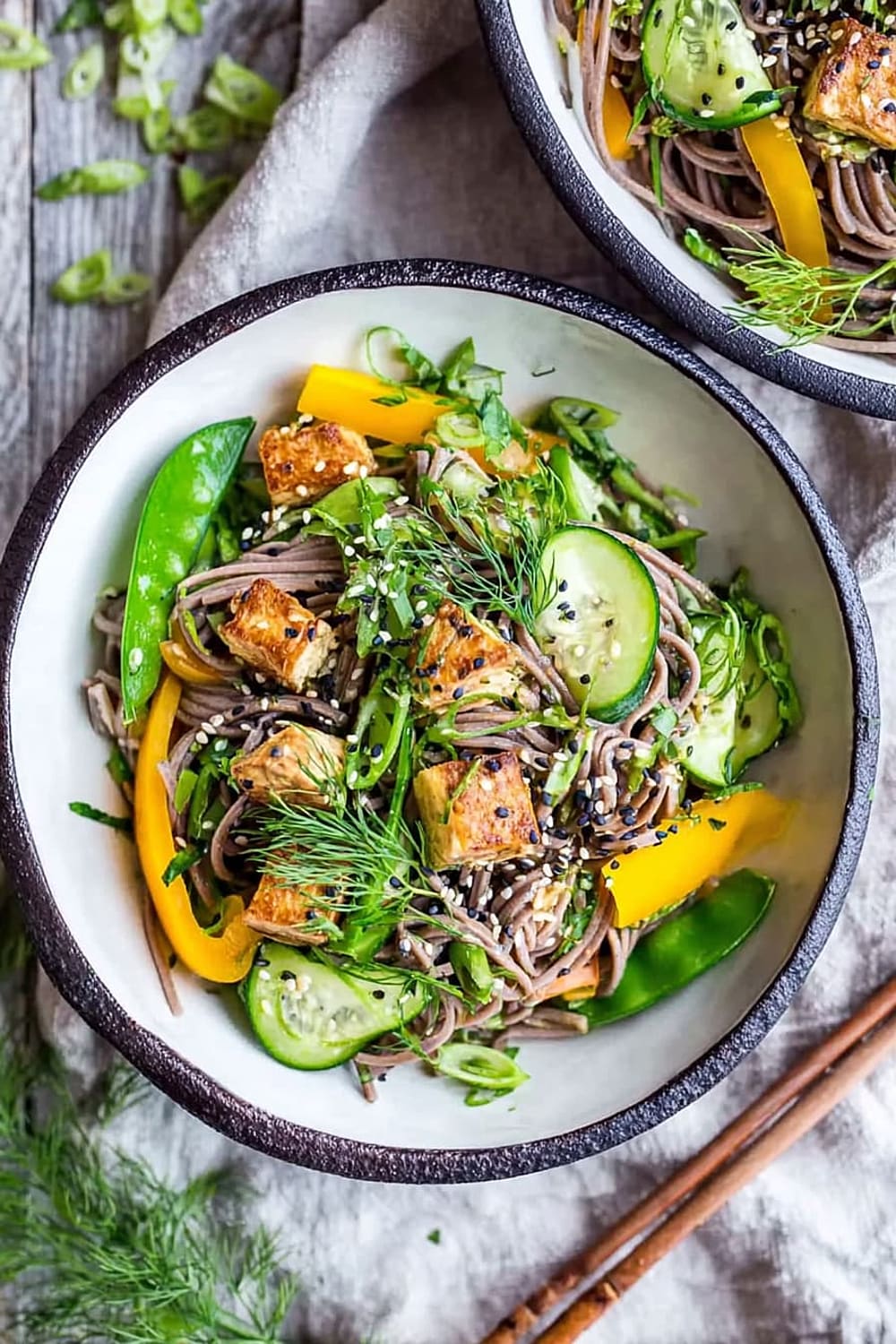
The moment you toss those silky buckwheat noodles with crisp vegetables and that addictive sesame dressing, you’ll understand why this dish has become the go-to recipe for people who want to look like they have their culinary life together.
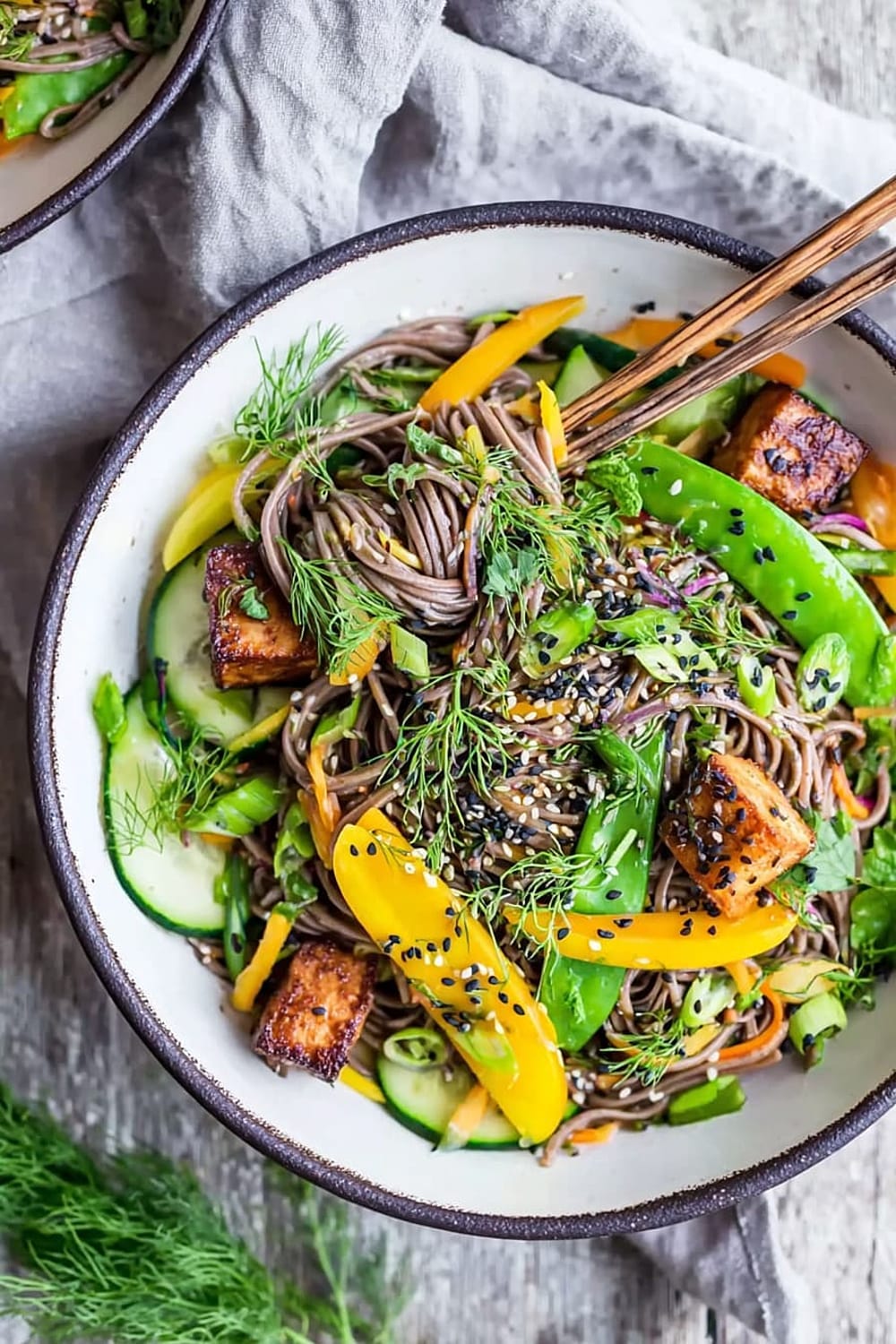
What makes this recipe absolutely brilliant is how the nutty soba noodles create the perfect canvas for all those vibrant vegetables, while the tangy sesame dressing ties everything together with its perfect balance of umami and brightness.
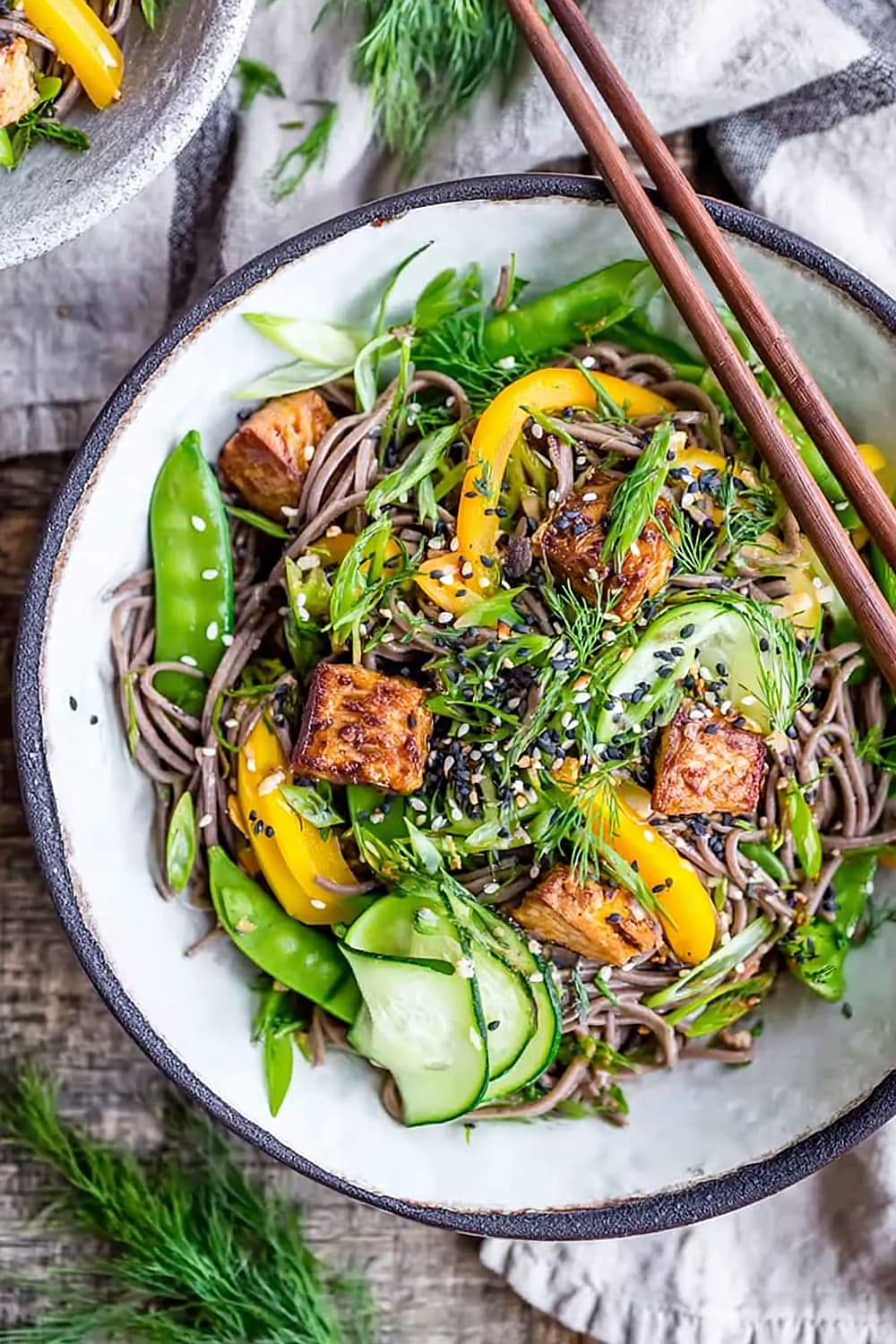
You’re about to discover that this isn’t just another pasta salad – it’s a textural masterpiece where every bite delivers crunch from the vegetables, chewiness from the noodles, and an explosion of fresh herb flavors.
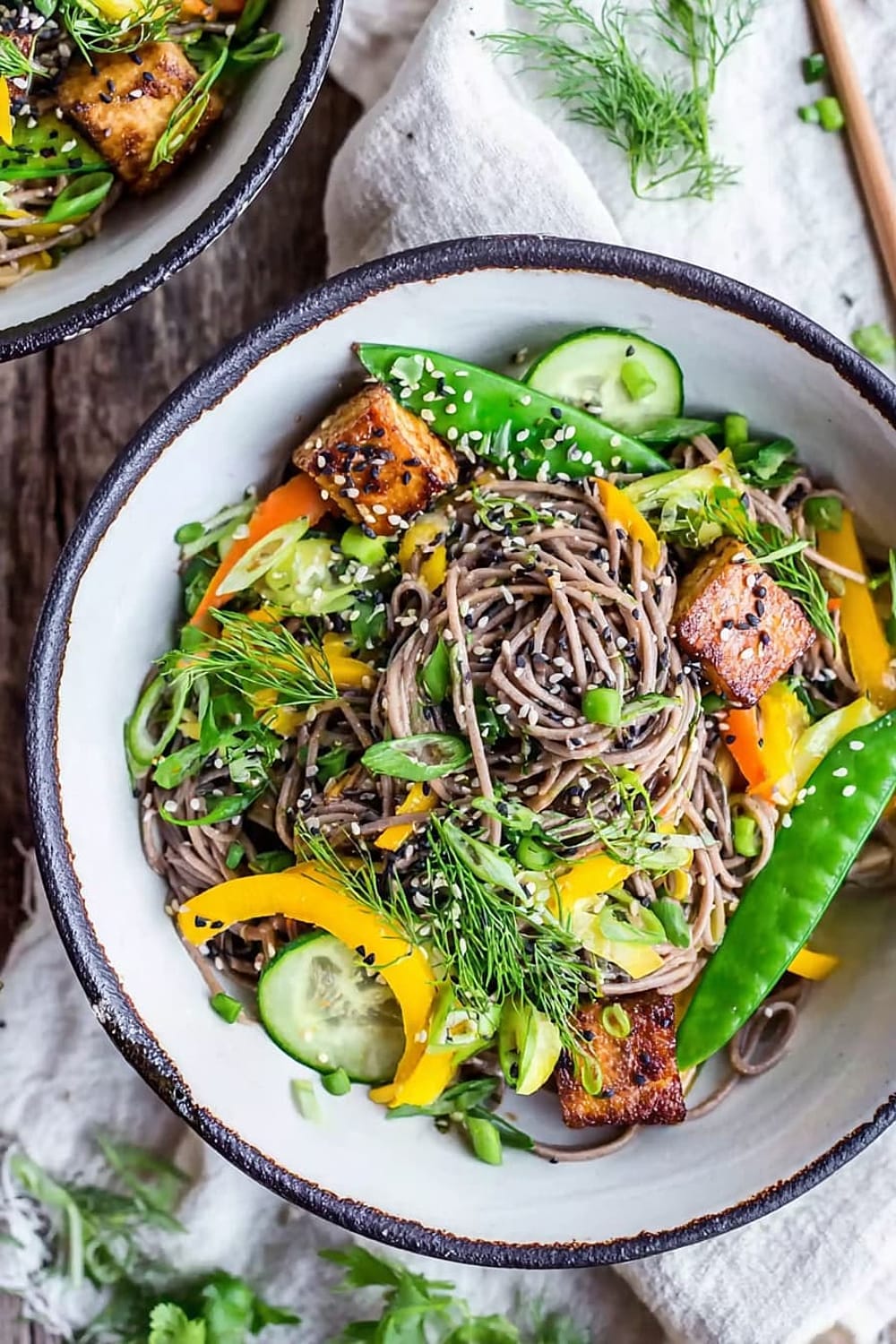
The best part is watching people’s faces when they realize you actually made this gorgeous, restaurant-quality dish in your own kitchen using ingredients you can find at any grocery store.
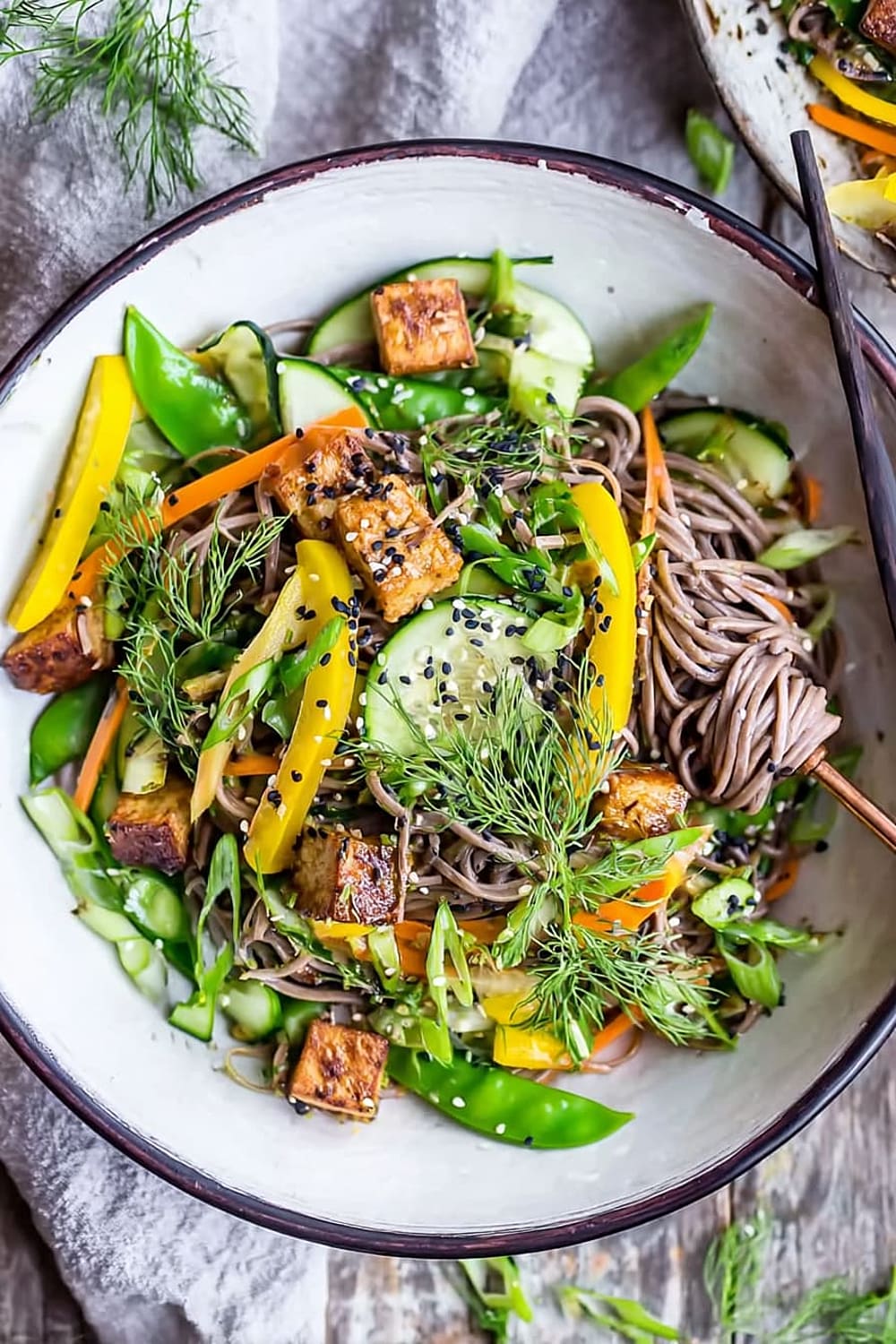
Get ready for compliments, recipe requests, and the satisfying knowledge that you’ve mastered a dish that’s equally perfect for meal prep, potluck contributions, or impressing dinner guests without breaking a sweat.
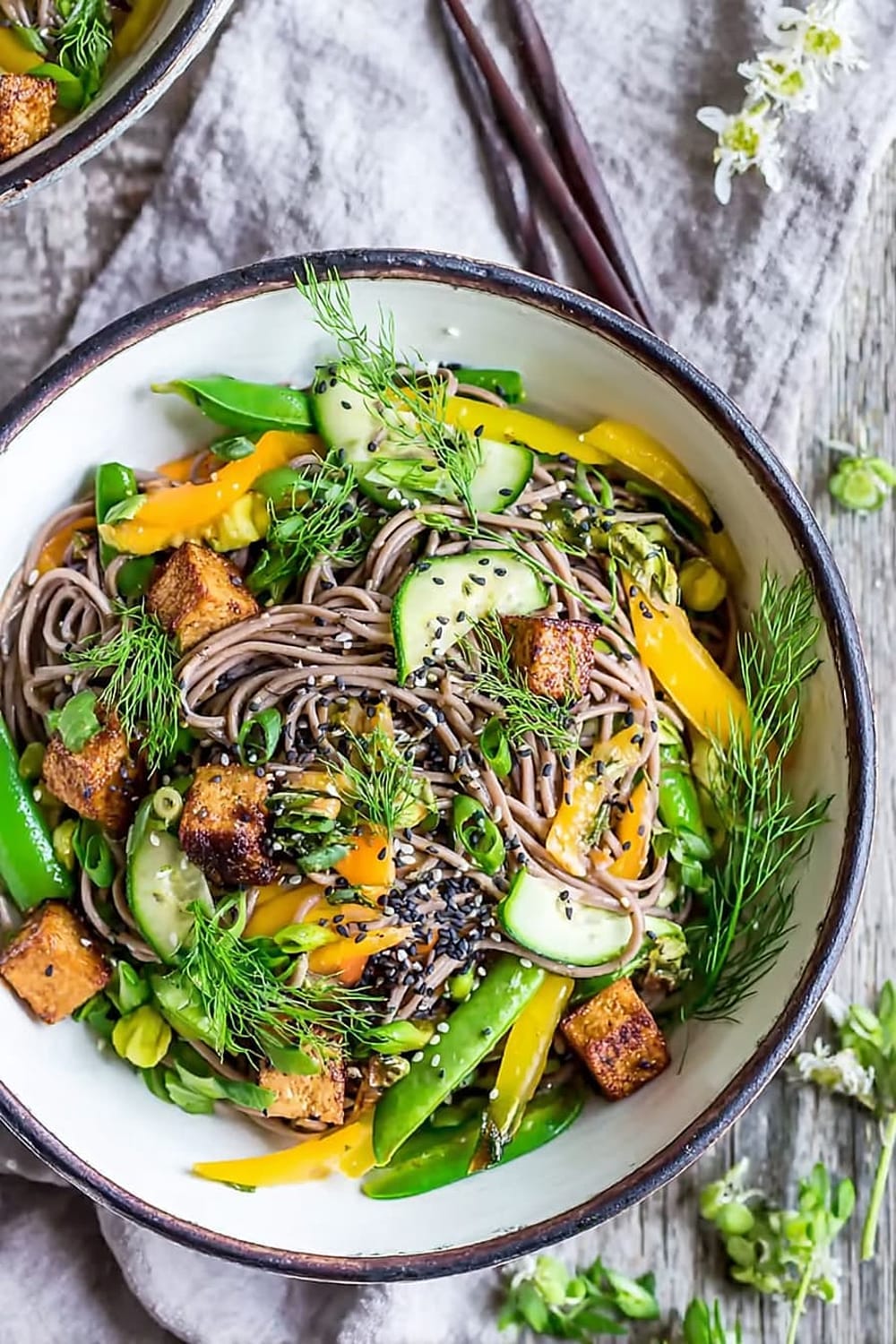
Ingredients
For the Sesame Dressing
- 2 tablespoons toasted sesame oil
- 1 /4 cup tamari, soy sauce, or gluten-free Bragg’s liquid amino acids
- 1 /4 cup rice wine vinegar
- 1 tablespoon mirin
- 2 teaspoons sugar, maple syrup, or honey
For the Soba Noodle Salad
- 8 ounces buckwheat soba noodles (ensure 100% gluten-free if needed)
- 1 1/2 cups English cucumber, sliced in half moons or diced
- 2 cups bok choy (or napa cabbage or green cabbage), shredded
- 1 bell pepper (red, yellow, or orange), cut in small strips
- 1 cup snow peas, chopped
- 1 /2 cup green onion, sliced finely
- 1 cup mixed fresh herbs (dill, cilantro, mint), roughly chopped
- 2 tablespoons toasted sesame seeds
- Optional: 8 oz crispy tofu, baked tofu, or smoked salmon
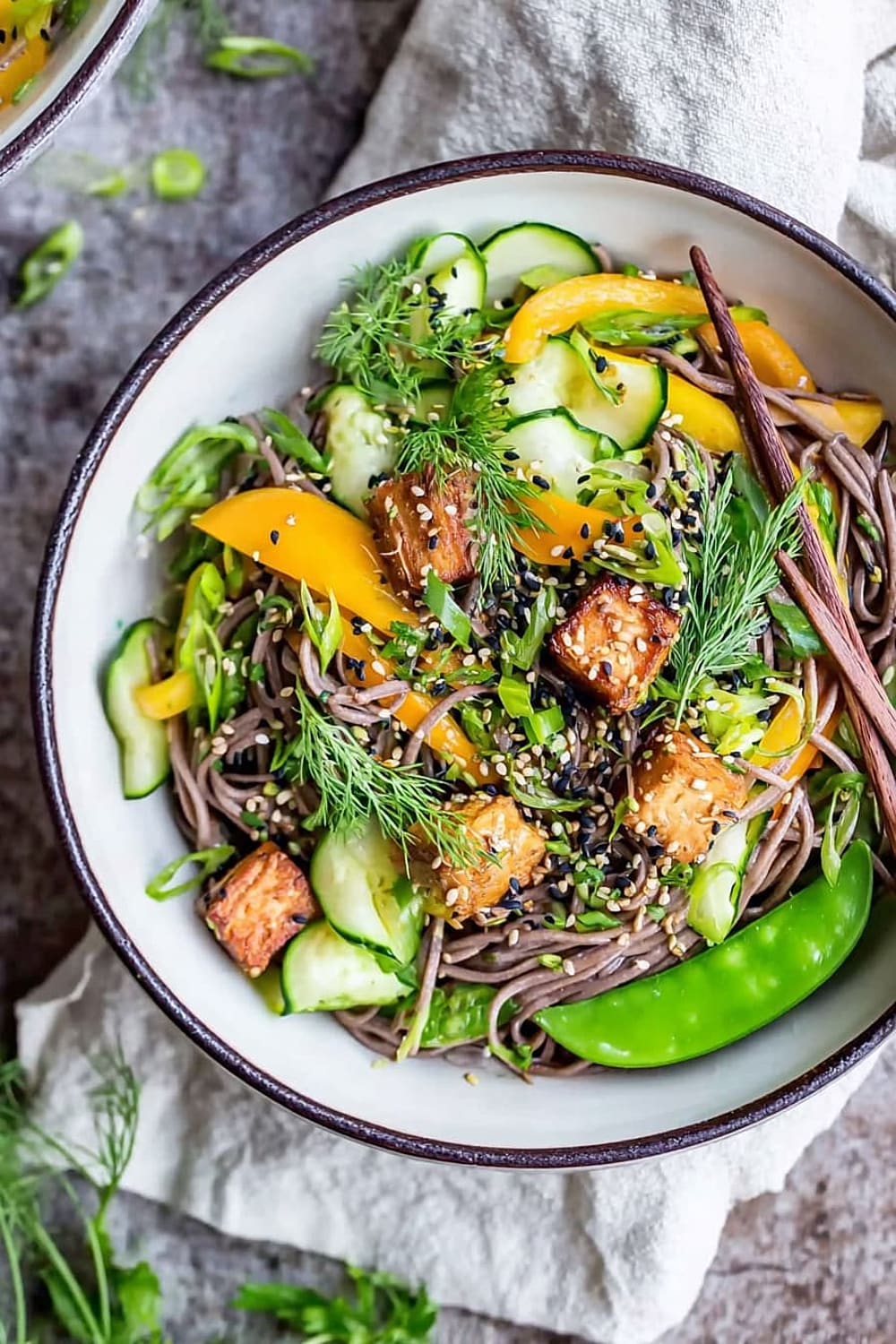
Instructions
Prepare the Dressing
- 1 In a medium mixing bowl, whisk together the toasted sesame oil, tamari or soy sauce, rice wine vinegar, mirin, and sugar until the sweetener completely dissolves. The dressing should have a glossy appearance and smell intensely nutty and aromatic. Set aside while you prepare the remaining components.
Cook the Soba Noodles
- 2 Bring a large pot of salted water to a rolling boil over high heat. Add the soba noodles and cook according to package directions, typically 4-6 minutes, stirring occasionally to prevent sticking. The noodles should be tender but still have a slight bite when done.
- 3 Drain the noodles immediately in a fine-mesh strainer and rinse thoroughly with cold running water for 1-2 minutes, tossing with your hands or tongs to ensure all the noodles are cooled. This stops the cooking process and removes excess starch that could make the salad gummy. Transfer the cooled noodles to a large mixing bowl.
Assemble the Salad
- 4 Add the prepared cucumber, shredded bok choy, bell pepper strips, chopped snow peas, sliced green onions, and mixed fresh herbs to the bowl with the cooled soba noodles. Use clean hands or large serving utensils to gently toss everything together, ensuring the vegetables are evenly distributed throughout the noodles.
- 5 Pour the prepared sesame dressing over the noodle and vegetable mixture. Using large serving spoons or clean hands, toss everything thoroughly until every strand of noodle and piece of vegetable is coated with the glossy dressing. The salad should look vibrant and well-integrated.
Final Touches
- 6 Sprinkle the toasted sesame seeds evenly over the top of the salad. If using protein, arrange the crispy tofu, baked tofu, or smoked salmon on top just before serving. For additional flavor and visual appeal, consider garnishing with dulse seaweed flakes, chili flakes, black sesame seeds, or a drizzle of sriracha according to taste preferences.
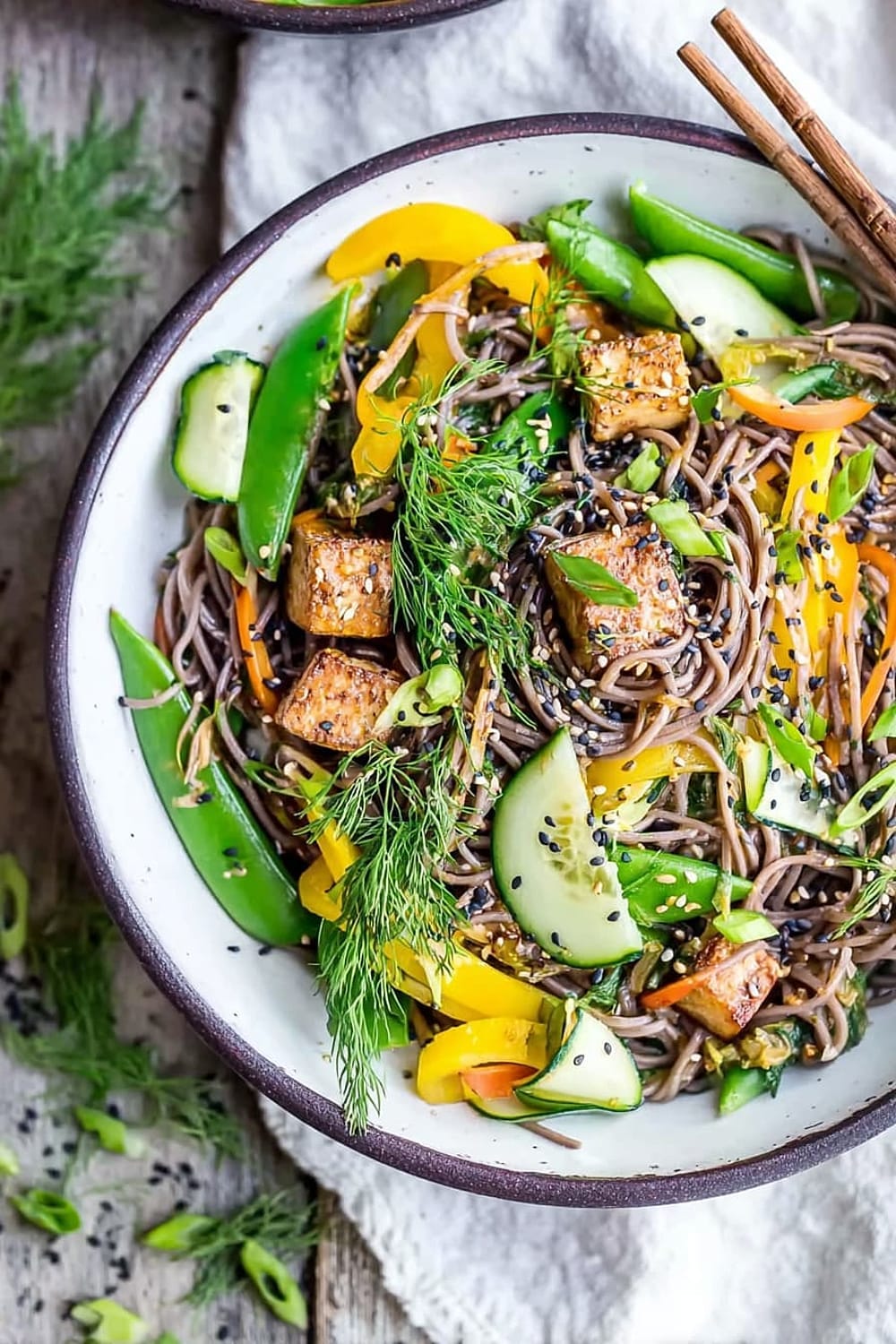
Recommended Equipment and Kitchen Tools
Essential Tools (for best results):
- Large mixing bowls – You’ll need at least one spacious bowl for tossing the salad components together without spillage
- Fine-mesh strainer – Critical for properly draining and rinsing the soba noodles to achieve the right texture
- Sharp chef’s knife – Makes quick work of julienning vegetables and ensures clean, uniform cuts for professional presentation
- Cutting board – A large, stable surface is essential for efficiently prepping all the fresh vegetables
Helpful Upgrades:
- Mandoline slicer – Creates perfectly uniform cucumber slices and bell pepper strips for restaurant-quality presentation
- Kitchen scale – Ensures accurate noodle portions and helps with consistent results every time you make this recipe
- Microplane grater – Perfect for zesting citrus additions or grating fresh ginger if you want to customize the dressing
- Immersion blender – While not necessary for this recipe, it’s excellent for emulsifying dressings if you want to experiment with variations
Nice-to-Have Options:
- Salad spinner – Useful if you’re washing your own herbs and want them perfectly dry for maximum flavor impact
- Storage containers – Glass containers with tight-fitting lids keep this salad fresh for meal prep throughout the week
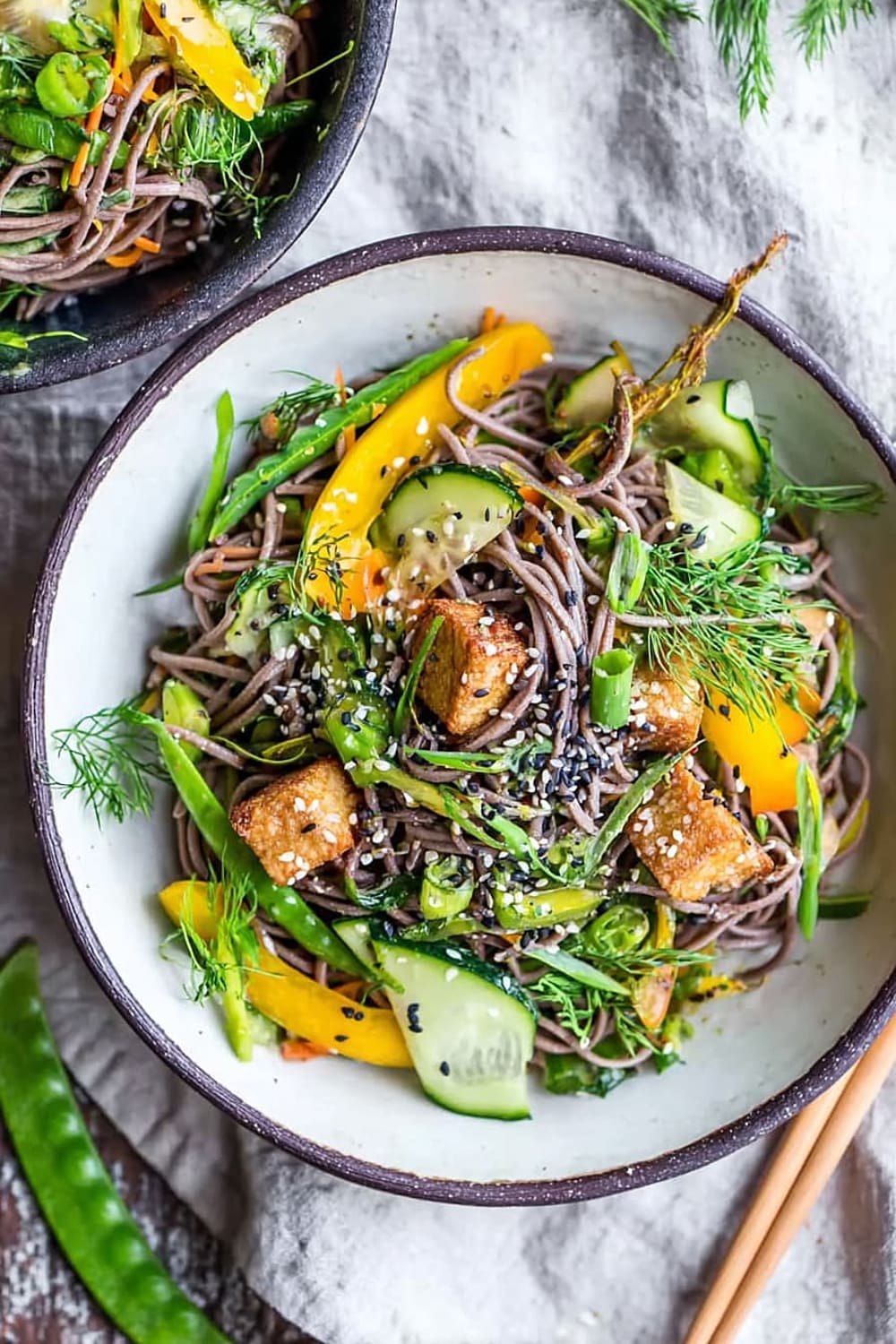
Recipe Variations and Dietary Modifications
Gluten-Free Adaptation:
- Ensure your soba noodles are 100% buckwheat – many contain wheat flour as a binder
- Substitute tamari or gluten-free liquid amino acids for regular soy sauce
- Double-check that mirin is gluten-free, or substitute with rice vinegar and a touch of extra sweetener
- All vegetables and garnishes are naturally gluten-free
Protein Variations:
- Crispy tofu: Pan-fry cubed extra-firm tofu in sesame oil until golden and crispy
- Edamame: Add 1 cup shelled edamame for plant-based protein and extra texture
- Grilled chicken: Slice grilled chicken breast and serve on top for a heartier meal
- Hard-boiled eggs: Halved eggs add richness and make this more filling
Seasonal Vegetable Swaps:
- Spring: Add sugar snap peas, radish slices, and fresh pea shoots
- Summer: Include cherry tomatoes, corn kernels, and fresh basil
- Fall: Incorporate shredded purple cabbage and thinly sliced apples
- Winter: Use julienned carrots, bean sprouts, and extra herbs for freshness
Spice Level Adjustments:
- Mild: Keep as written, or add a touch of fresh ginger to the dressing
- Medium: Include 1 teaspoon sriracha in the dressing and garnish with red pepper flakes
- Spicy: Add fresh sliced jalapeños to the vegetables and double the chili garnishes
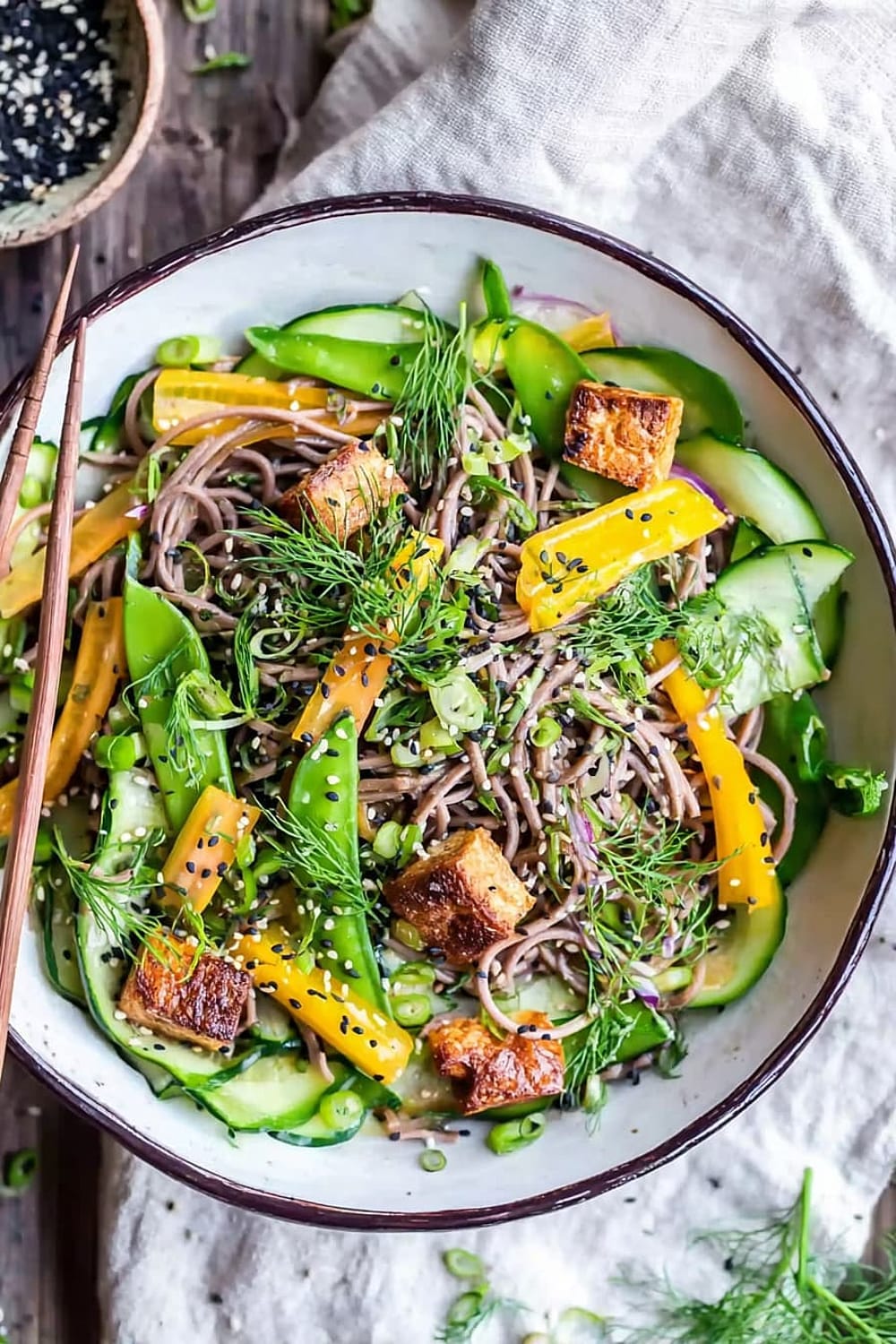
Nutritional Information and Health Benefits
Key Nutritional Highlights:
This soba noodle salad provides approximately 280-320 calories per serving (based on 4 servings), with a balanced macronutrient profile featuring complex carbohydrates from the buckwheat noodles, healthy fats from sesame oil, and abundant vitamins from the fresh vegetables. Each serving delivers approximately 8-10 grams of plant-based protein, 6-8 grams of fiber, and significant amounts of vitamin C, vitamin K, and folate from the diverse vegetable medley.
Health Benefits of Main Ingredients:
Buckwheat soba noodles are naturally gluten-free and rich in rutin, a powerful antioxidant that supports cardiovascular health and may help regulate blood sugar levels. The toasted sesame oil provides essential fatty acids and lignans, which have anti-inflammatory properties and support heart health. Bok choy and other cruciferous vegetables contain glucosinolates, compounds that support detoxification and may have cancer-protective properties. The fresh herbs contribute additional antioxidants, with cilantro supporting heavy metal detoxification and mint providing digestive benefits.
Dietary Considerations:
This recipe is naturally dairy-free and egg-free, making it suitable for many dietary restrictions. When made with tamari instead of soy sauce and 100% buckwheat noodles, it becomes completely gluten-free. The high fiber content from vegetables and buckwheat supports digestive health and helps maintain stable blood sugar levels. With approximately 45-50 grams of carbohydrates per serving, this dish provides sustained energy without causing dramatic blood sugar spikes.
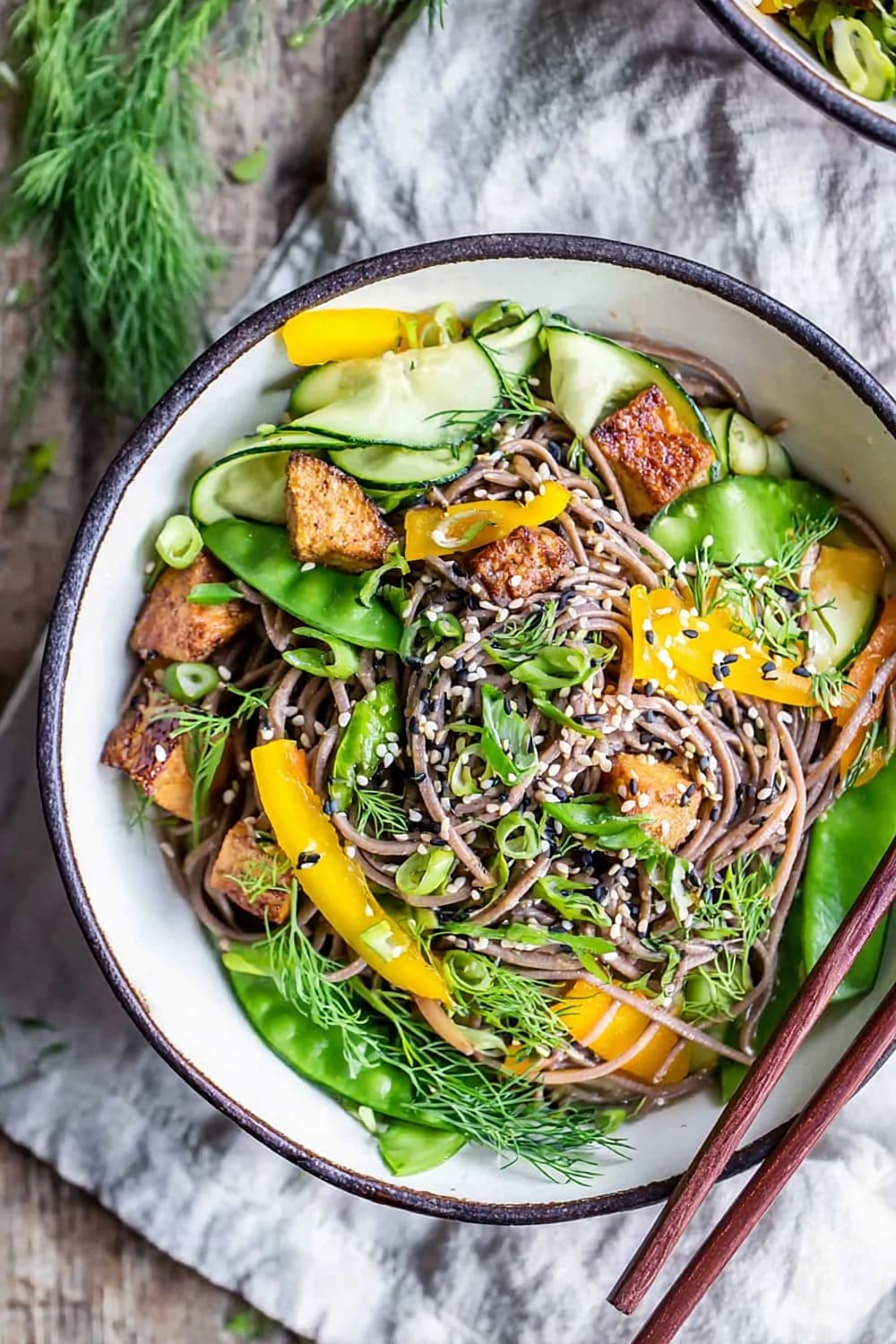
Smart Swaps and Ingredient Substitutions
Noodle Alternatives:
- Soba noodles → Rice noodles, shirataki noodles, or spiralized zucchini for lower carbs
- Buckwheat soba → Regular whole wheat spaghetti or udon noodles if buckwheat isn’t available
- Gluten-free option → Ensure 100% buckwheat soba or substitute with rice vermicelli
Vegetable Substitutions:
- Bok choy → Napa cabbage, regular green cabbage, or thinly sliced Brussels sprouts
- Snow peas → Sugar snap peas, green beans, or thinly sliced bell peppers
- English cucumber → Regular cucumber (peeled and seeded) or julienned jicama for extra crunch
Dressing Component Swaps:
- Mirin → Rice vinegar plus 1 teaspoon honey or maple syrup
- Toasted sesame oil → Regular sesame oil (use less) or avocado oil with 1 tablespoon tahini
- Tamari → Coconut aminos for soy-free option, or low-sodium soy sauce
Budget-Friendly Alternatives:
- Mixed herbs → Focus on one affordable herb like cilantro or use green onion tops
- Toasted sesame seeds → Raw sesame seeds toasted in a dry pan for 2-3 minutes
- Bell peppers → Shredded carrots or thinly sliced radishes for crunch and color

Make It Diabetes-Friendly
Carbohydrate Modifications:
- Reduce noodle portion to 4-6 ounces and increase vegetables by 50% to maintain volume while cutting carbs by approximately 20-25 grams
- Substitute half the noodles with spiralized vegetables like zucchini or cucumber noodles
- Add extra protein such as tofu or salmon to help slow carbohydrate absorption and improve satiety
Sweetener Adjustments:
- Replace sugar with stevia, monk fruit sweetener, or erythritol using 1/2 teaspoon stevia or 1 teaspoon erythritol
- Eliminate mirin and substitute with additional rice vinegar plus a pinch of stevia
- Total sugar reduction: Cuts approximately 8 grams of added sugars from the original recipe
Portion & Timing Strategies:
- Recommended serving size: 1 cup as a side dish or 1.5 cups as a main course with added protein
- Estimated carbs per modified serving: 25-30 grams (reduced from original 45-50 grams)
- Pairing suggestions: Serve with grilled protein and steamed non-starchy vegetables to create a balanced, blood sugar-friendly meal
Enhanced Fiber Content:
- Add extra vegetables like shredded cabbage, bean sprouts, or julienned radishes to increase fiber without significantly impacting carbohydrates
- Include chia seeds or ground flaxseed (1 tablespoon) for additional fiber and healthy fats
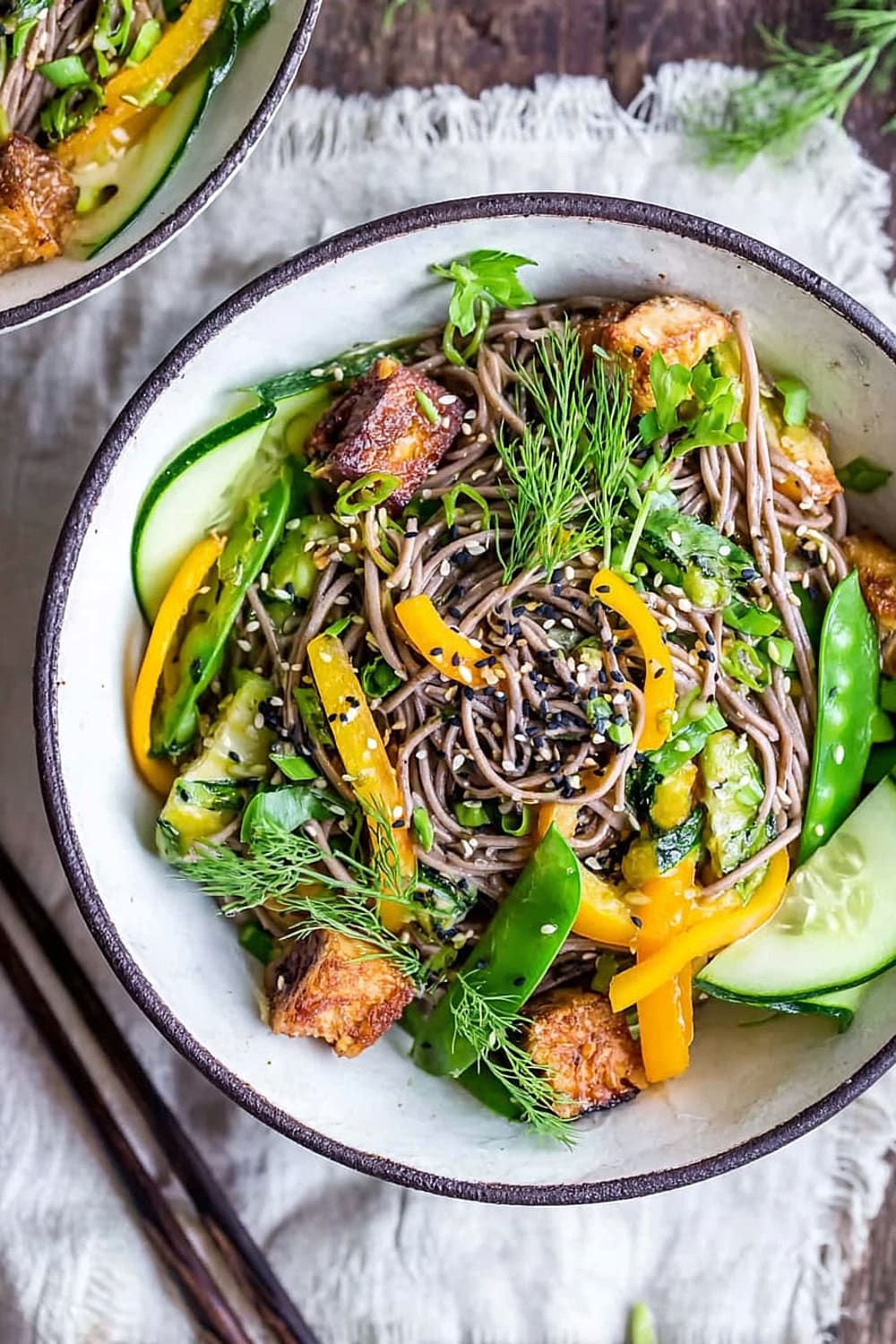
Perfect Pairing Suggestions
Beverage Pairings:
This vibrant salad pairs beautifully with crisp white wines like Sauvignon Blanc or Pinot Grigio, whose acidity complements the tangy sesame dressing. For beer lovers, a light lager or wheat beer won’t compete with the delicate buckwheat flavors. Green tea or jasmine tea makes an excellent non-alcoholic pairing, echoing the Asian flavor profile, while sparkling water with lime cleanses the palate between bites.
Complementary Side Dishes:
Serve alongside miso soup for a traditional Japanese meal experience, or pair with gyoza or vegetable spring rolls for a complete Asian-inspired spread. Grilled or steamed edamame adds extra protein and maintains the theme, while pickled vegetables provide a nice acidic contrast to the nutty sesame flavors. For a fusion approach, avocado salad with lime dressing offers creamy richness that balances the salad’s bright, clean flavors.
Complete Meal Ideas:
Transform this into a substantial dinner by adding teriyaki-glazed salmon or chicken on top, creating a protein-rich bowl that’s both satisfying and nutritious. For vegetarian meals, pair with agedashi tofu or vegetable tempura for textural contrast. When entertaining, serve this as part of a build-your-own noodle bowl station with various proteins, additional vegetables, and sauce options.
Seasonal Occasion Suggestions:
This salad shines at summer potlucks and picnics since it’s served cold and travels well. It’s perfect for meal prep Sundays, providing fresh, healthy lunches throughout the week. The elegant presentation makes it suitable for dinner parties as a sophisticated starter or side dish that accommodates various dietary preferences.
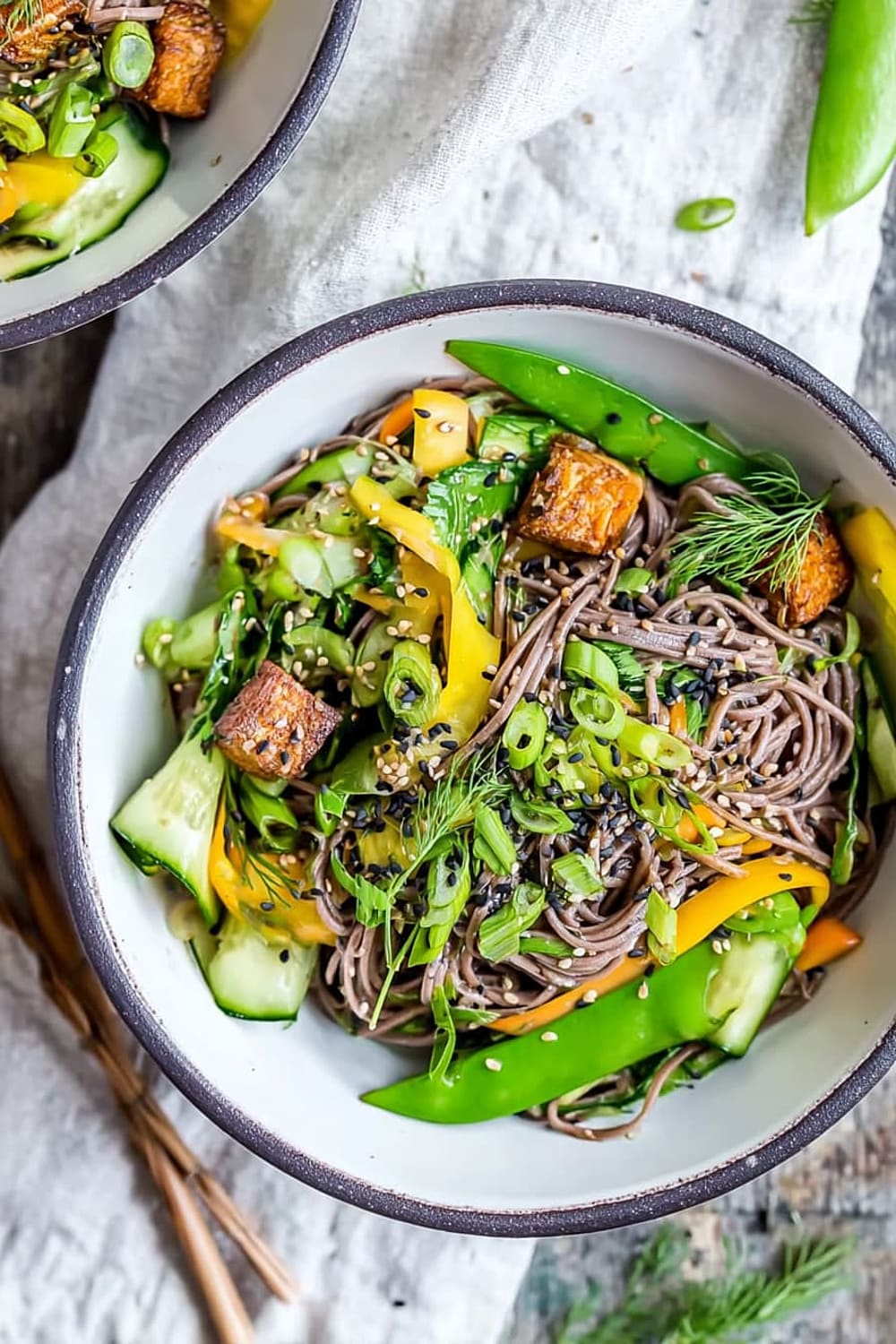
Pro Tips and Troubleshooting
Noodle Perfection Secrets:
The key to perfect soba noodles is the cold water rinse – don’t skip this step or your salad will be gummy and unappetizing. Rinse until the water runs clear and the noodles feel clean and separate easily. If your noodles seem sticky after rinsing, toss them with a tiny amount of sesame oil to prevent clumping while you prep the vegetables.
Make-Ahead Strategies:
This salad actually improves with time as the flavors meld, making it perfect for meal prep. Store the dressed salad in the refrigerator for up to 3 days, but add fresh herbs and sesame seeds just before serving to maintain their vibrant color and crunch. If preparing more than a day ahead, store the dressing separately and toss just before serving to prevent the vegetables from becoming soggy.
Texture and Flavor Optimization:
For maximum crunch, salt your cucumber slices lightly and let them drain for 15 minutes before adding to the salad – this removes excess water that could dilute the dressing. Toast your own sesame seeds in a dry pan for 2-3 minutes until golden for superior flavor compared to pre-toasted varieties. When chopping herbs, use a sharp knife and avoid crushing them to prevent bruising and maintain bright color.
Storage and Scaling Tips:
This recipe doubles or triples easily for large gatherings – just use a very large bowl or work in batches to ensure even distribution of dressing. Store leftovers in glass containers rather than plastic to prevent the sesame oil from absorbing unwanted flavors. If the salad seems dry after refrigeration, refresh it with a splash of rice vinegar and a drizzle of sesame oil before serving.
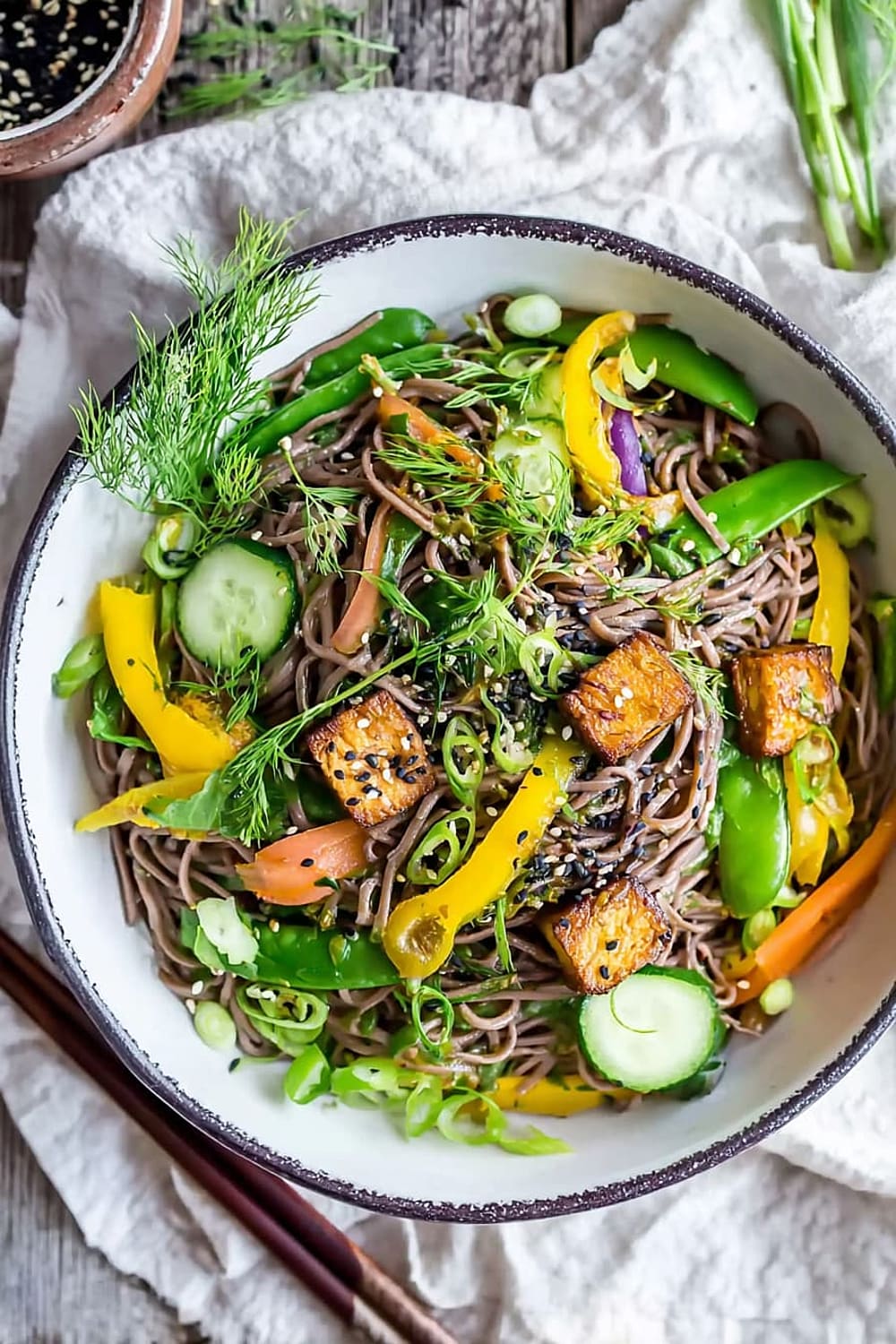
This soba noodle salad proves that the best recipes are often the simplest ones – fresh ingredients, thoughtful preparation, and a perfect balance of flavors that makes every bite absolutely irresistible.